What is Forex?
Forex is the foreign exchange market. This is the platform used for exchanging Fiat money. Fiat money is a type of currency that is not backed by any commodity such as gold or silver but is instead backed by the issuing government.
Fiat is a Latin word meaning “it shall be”.
Forex trading is the exchange of these currencies and we can see evidence of similar systems as far back as the Babylonian period. This way of trading is ancient and has been moulded into its current form by a number of major global events.
The Beginning
It all began with the Mesopotamia tribes and the barter system back as far as 6000BC. This was the simple exchange of goods for other goods.
Later ships would sail to foreign lands to barter for salt and spices, which became a currency of sorts.
Around 700BC the first gold coins came into circulation and quickly became popular due to them being durable, portable and in limited supply making them all the more desirable. Over time a problem arose as the gold coin was produced in larger batches, in large quantities gold was very heavy.
This would continue to be a problem for hundreds of years, until, in the 1800’s the gold standard was introduced. This guaranteed that the government would exchange any amount of bank notes for their value in gold.
This again worked well for a period of time but could not hold when World War I forced countries to print more money to pay for the war.
The Bretton Woods System
In 1944 the Bretton Woods Monetary Conference was held in the Mount Washington Hotel, Bretton Woods, New Hampshire. Led by the USA, Great Britain and France, the United Nations Monetary and Financial Conference was a gathering of representatives from 44 countries around the world to find a way to stabilise post war currency. As a result of the conference, the world bank was formed and the value of gold (the gold standard) was set at $35 an ounce (28.35g). The dollar was confirmed as the “standard” currency for international exchange. As a result of this the dollar recovered after devastating effects of the 1929 stock market crash.
The conference established an adjustable pegged foreign exchange market. This meant that other countries fixed their currency to the US dollar effectively giving value to the currency. The dollar was backed by the largest gold reserve in the world at that time. This meant that international business transactions took place in dollars.
This system continued until 1971 when President Richard Nixon ended it due to there not being enough gold to back the number of dollars in circulation. This was bought on by increased government lending and expenses.
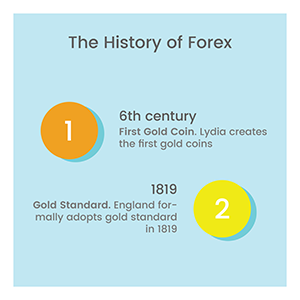
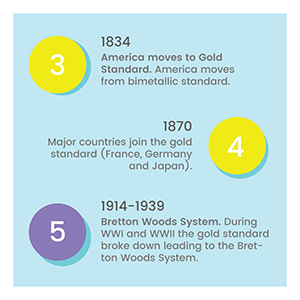
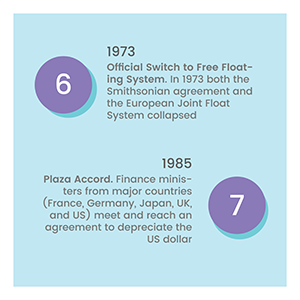
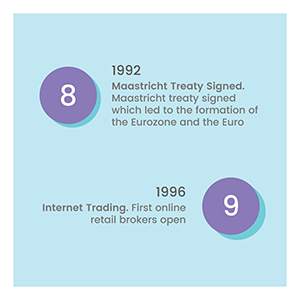
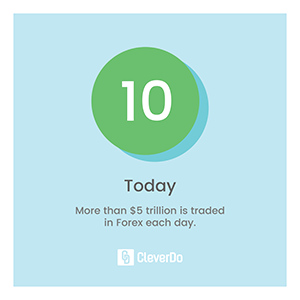
The Free-Floating System
In December 1971, from the ashes of the Bretton Woods System rose the Smithsonian Agreement.
In 1972 the European community (West Germany, France, Italy, the Netherlands, Belgium, and Luxemburg) tried to separate itself from the US dollar with the European Joint Float. Both made similar mistakes to those of the Bretton Woods and failed in 1973.
This is when the Free-Floating system was officially adopted. In a floating exchange rate system, no official currency value is maintained.
The Plaza Accord
In the early 1980s the dollar had appreciated greatly against the other major currencies. Currency appreciation is an increase in the value of the currency, depreciation is a decrease of value. This caused huge problems for exporters and the result was that the US economy ran at a deficit of 3.5%. To combat this, in 1985 Paul Volcker the Chair of the Federal Reserve of the United States at the time, raised interest rates which resulted in a strong dollar. Unfortunately, this caused massive damage to US industry in the global market.
In the same year the G5 (US, Great Britain, France, West Germany and Japan) attended a meeting resulting in the Plaza Accord. The aim to once again bring stability to foreign (non-US dollar) currency. This caused massive depreciation of the US dollar.
The Maastricht Treaty
This treaty was signed in 1992 and was the basis for the formation of the European Union which in turn led to the conception of the Euro currency. For European banks and businesses this eliminating exchange risk for Euro countries.
Going Online
The 1990’s bought a new way of trading. With the introduction of the internet into homes and offices a person could know switch on their computer and achieve the same with click of a button as a team of brokers, traders and telephones. Mobile wallets have bought foreign exchange to most mobile phones, making it accessable to almost anyone.

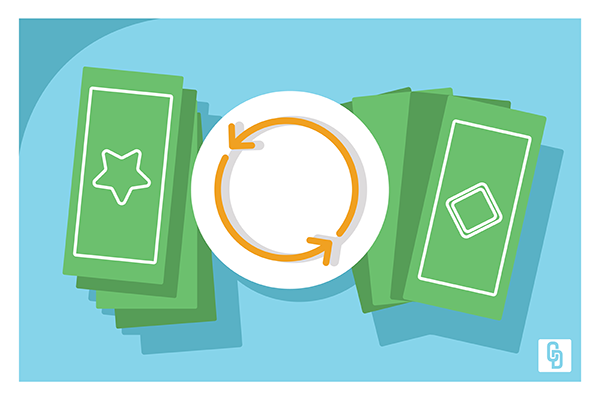
Recent Comments